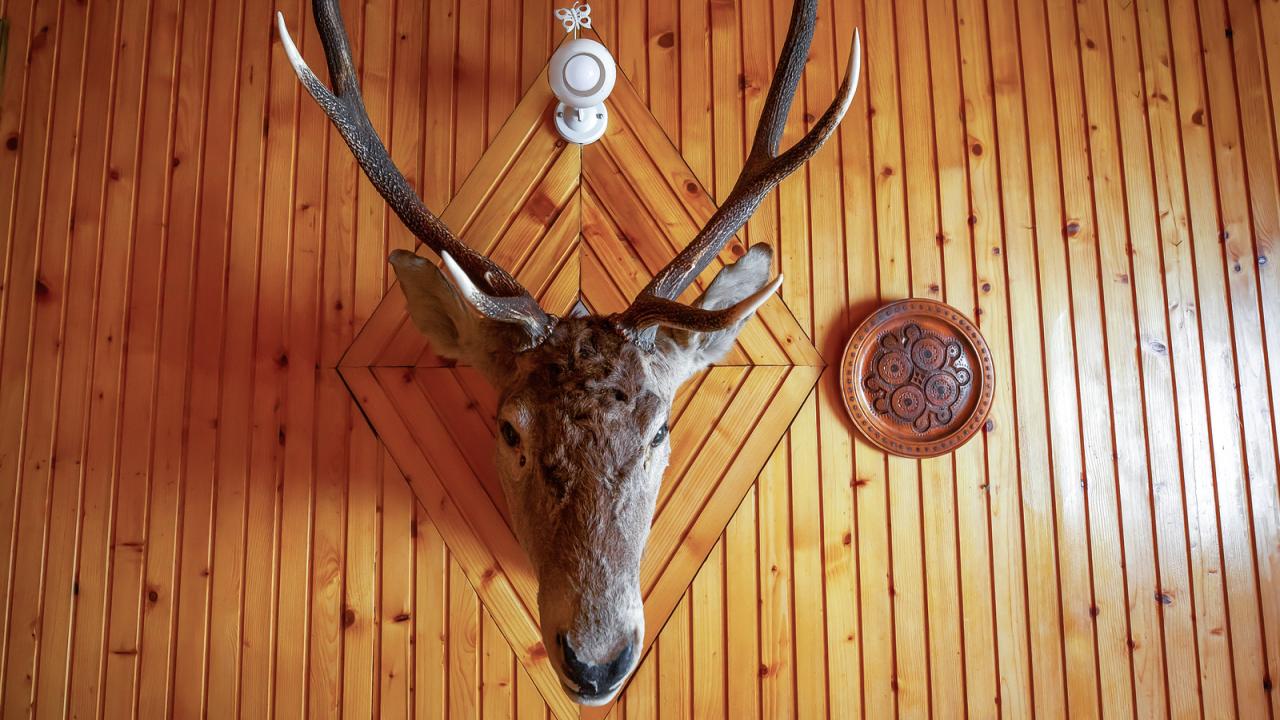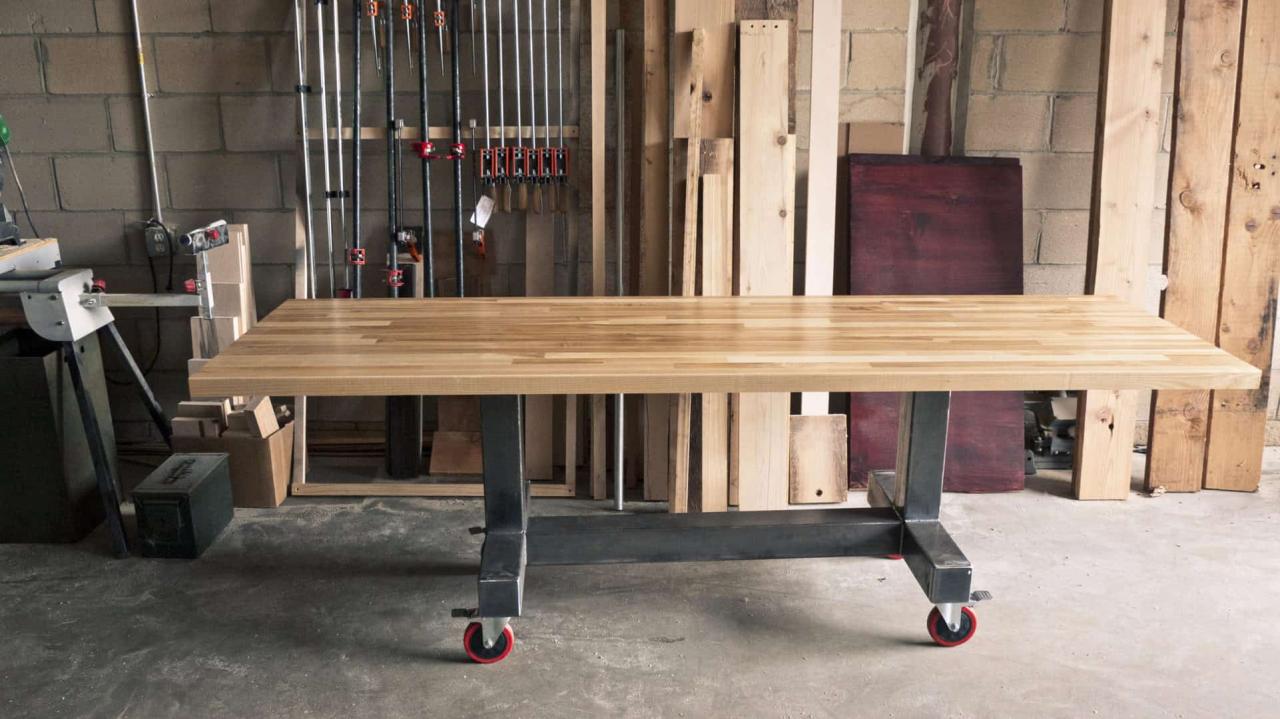Get ready to master the art of deer butchering with our comprehensive guide to deer butchering tables. Whether you’re a seasoned pro or a first-timer, this ultimate resource has got you covered.
In this guide, we’ll dive into the world of deer butchering tables, exploring their types, features, and essential accessories. We’ll also provide expert tips on setting up, using, and maintaining your table for optimal performance.
Deer Butchering Table Overview


Deer butchering tables are essential tools for hunters who want to process their own venison. They provide a clean and sanitary surface for cutting and processing deer meat, and they can help to make the job easier and more efficient.There
are a few different types of deer butchering tables available, each with its own advantages and disadvantages. The most common type of deer butchering table is the folding table. These tables are lightweight and easy to transport, making them ideal for hunters who don’t have a lot of space.
However, folding tables can be less sturdy than other types of tables, and they may not be able to handle the weight of a large deer.Another type of deer butchering table is the permanent table. These tables are typically made of stainless steel or aluminum, and they are designed to be durable and long-lasting.
Permanent tables are more expensive than folding tables, but they offer a number of advantages. They are more sturdy, they can handle the weight of a large deer, and they are easier to clean.When choosing a deer butchering table, it is important to consider your needs.
If you are only going to be butchering a few deer each year, a folding table may be sufficient. However, if you are going to be butchering a lot of deer, or if you want a table that is more durable, a permanent table is a better choice.
Features of a Deer Butchering Table
A deer butchering table is a specialized piece of equipment designed to make the process of butchering deer easier, safer, and more efficient. It typically consists of a sturdy frame, a durable surface, and a variety of features that can help you quickly and easily process your deer.
One of the most important features of a deer butchering table is its sturdy frame. The frame should be made of durable materials, such as stainless steel or aluminum, that can withstand the weight of a deer and the force of butchering.
The frame should also be stable and well-balanced, so that it does not wobble or tip over when you are using it.
The surface of a deer butchering table should be made of a durable material that is easy to clean and sanitize. Stainless steel is a good choice for the surface of a deer butchering table because it is non-porous and resistant to bacteria.
The surface should also be large enough to accommodate the deer you are butchering, and it should have a raised edge to prevent blood and other fluids from spilling over the sides.
Deer butchering tables are essential for any hunter, and if you’re part of a deer hunting club , you’ll likely need one to process your game. They provide a sturdy and sanitary surface for field dressing and butchering, making the process more efficient and enjoyable.
Whether you’re a seasoned pro or a novice, a deer butchering table can help you get the job done right.
Some deer butchering tables come with built-in meat grinders and sausage stuffers. These features can be very convenient, as they allow you to grind and stuff your deer meat without having to purchase separate equipment. However, it is important to make sure that the meat grinder and sausage stuffer are of good quality and that they are easy to use.
Essential Features of a Deer Butchering Table
- Sturdy frame made of durable materials, such as stainless steel or aluminum
- Durable surface made of a non-porous material, such as stainless steel
- Large enough to accommodate the deer you are butchering
- Raised edge to prevent blood and other fluids from spilling over the sides
- Built-in meat grinder and sausage stuffer (optional)
Setting Up and Using a Deer Butchering Table


Setting up and using a deer butchering table is essential for a successful and safe deer processing experience. Here’s a step-by-step guide to help you get started:
Step-by-Step Setup
- Choose a suitable location:Select a well-ventilated area with access to water and drainage.
- Assemble the table:Follow the manufacturer’s instructions to assemble the table securely.
- Level the table:Ensure the table is level to prevent any accidents or spills.
- Attach the game hoist:If using a game hoist, attach it to the table to aid in lifting and positioning the deer.
Cleaning and Sanitizing
Before using the butchering table, it’s crucial to clean and sanitize it thoroughly to prevent contamination:
- Wash the table:Use hot, soapy water to wash the entire table, including the surface, legs, and any attachments.
- Rinse thoroughly:Rinse the table thoroughly with clean water to remove any soap residue.
- Sanitize the surface:Use a food-grade sanitizer, such as a bleach solution, to disinfect the table’s surface.
- Rinse again:Rinse the table once more with clean water to remove any remaining sanitizer.
Butchering Techniques
There are several different techniques for butchering a deer on a butchering table. Here are some common methods:
- Skinning:Remove the deer’s hide using a sharp knife and skinning pliers.
- Field dressing:Remove the deer’s internal organs, including the heart, lungs, liver, and intestines.
- Quartering:Divide the deer into four quarters by cutting through the rib cage and pelvic bone.
- Boning:Remove the meat from the bones, leaving behind a boneless carcass.
- Trimming:Remove any excess fat or sinew from the meat.
Care and Maintenance of a Deer Butchering Table
Deer butchering tables are essential equipment for hunters and butchers alike, but they require regular care and maintenance to ensure they remain in optimal condition. Neglecting to properly clean and maintain your deer butchering table can lead to a buildup of bacteria, rust, and corrosion, which can compromise the safety and longevity of your table.
Cleaning and Disinfecting, Deer butchering table
After each use, it is crucial to thoroughly clean and disinfect your deer butchering table. This will help prevent the growth of bacteria and ensure the table is safe for future use. To clean your table, follow these steps:
- Remove all meat and bone fragments from the table.
- Rinse the table with hot water to remove any remaining blood or debris.
- Apply a food-safe disinfectant to the table and allow it to sit for the recommended amount of time.
- Rinse the table again with hot water and dry it thoroughly with a clean towel.
Preventing Rust and Corrosion
Deer butchering tables are often exposed to moisture, which can lead to rust and corrosion. To prevent this, it is important to take the following steps:
- Dry your table thoroughly after each use.
- Apply a food-safe lubricant to the table to create a barrier against moisture.
- Store your table in a dry place when not in use.
Accessories for a Deer Butchering Table
A deer butchering table is an essential piece of equipment for any hunter who wants to process their own venison. In addition to the basic table, there are a number of accessories that can make the job easier and more efficient.
Whether you’re a seasoned hunter or just starting out, having the right equipment can make all the difference. A deer butchering table is an essential piece of gear for any deer hunter, providing a clean and efficient workspace for processing your game.
And if you’re looking for a great place to play a round of golf, be sure to check out deer creek golf course for sale . With its challenging layout and beautiful scenery, it’s the perfect place to spend a day on the links.
And when you’re done, you can head back to your deer butchering table and start preparing your venison for the freezer.
One of the most important accessories is a set of good knives. A sharp knife will make it much easier to skin and butcher the deer, and it will also help to prevent accidents. There are a variety of different knives that can be used for deer butchering, so it is important to choose the ones that are right for you.
Another essential accessory is a saw. A saw will be needed to cut through the bones of the deer, and it can also be used to cut the meat into smaller pieces. There are a variety of different saws that can be used for deer butchering, so it is important to choose one that is the right size and type for your needs.
A grinder is another useful accessory for deer butchering. A grinder can be used to grind the meat into burger or sausage, and it can also be used to make jerky. There are a variety of different grinders that can be used for deer butchering, so it is important to choose one that is the right size and type for your needs.
Deer Hoist or Gambrel
A deer hoist or gambrel is a device that is used to hang the deer from its hind legs. This makes it easier to skin and butcher the deer, and it also helps to keep the meat clean. There are a variety of different deer hoists and gambrels available, so it is important to choose one that is the right size and type for your needs.
Butchering Block
A butchering block is a solid surface that is used for cutting meat. Butchering blocks are typically made of wood or plastic, and they are designed to withstand the wear and tear of butchering. A butchering block can help to keep your knives sharp, and it can also help to prevent accidents.
Safety Considerations When Using a Deer Butchering Table


When working with a deer butchering table, safety should be your top priority. The sharp knives and saws used in the process pose significant risks of accidents and injuries. Here are some essential safety considerations to keep in mind:
Proper Knife Handling
- Always use sharp knives, as dull knives require more force and can slip, increasing the risk of cuts.
- Keep your knives clean and dry to prevent bacteria growth and ensure a firm grip.
- Never point a knife at anyone, even if it’s not in use.
- Use a cutting board to protect the surface of the table and prevent the knife from slipping.
- Store knives safely in a designated knife block or holder when not in use.
Closing Summary


From choosing the right table to butchering your deer like a pro, this guide has empowered you with the knowledge and skills to tackle this task with confidence. So, grab your sharpest knives, don your butcher’s apron, and let’s get butchering!
FAQ Compilation
What’s the best type of deer butchering table for beginners?
For beginners, a portable or folding table with a sturdy frame and durable surface is a great option. It’s easy to set up and transport, making it perfect for occasional use.
How often should I clean my deer butchering table?
Regular cleaning is crucial to prevent bacteria growth and ensure food safety. Clean and disinfect your table thoroughly after each use, especially after butchering raw meat.
What essential accessories do I need for deer butchering?
Sharp knives, a meat grinder, a sausage stuffer, a deer hoist or gambrel, and a dedicated butchering block are essential tools that will make your butchering process more efficient and enjoyable.







